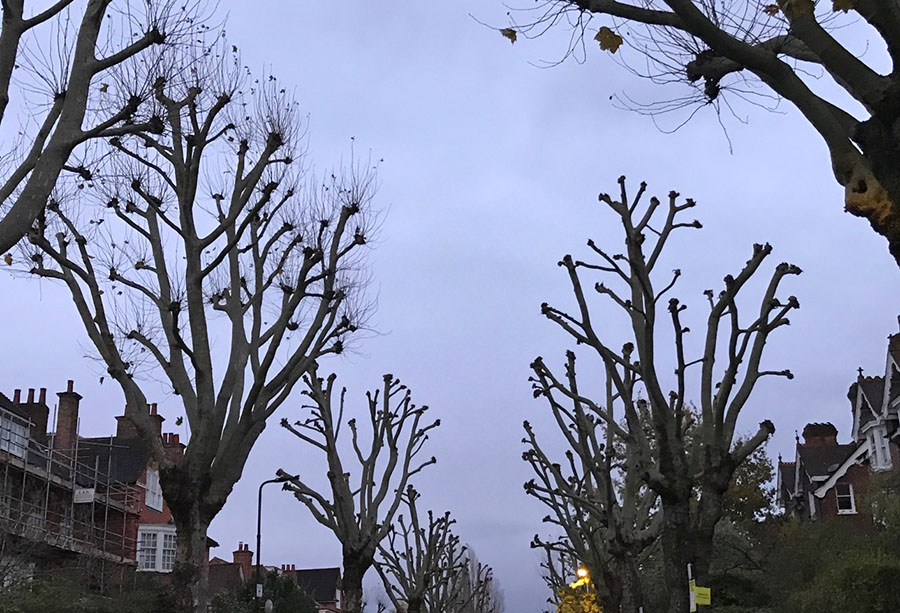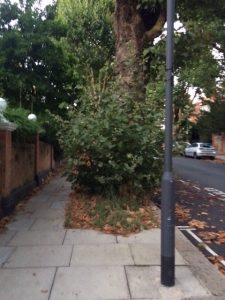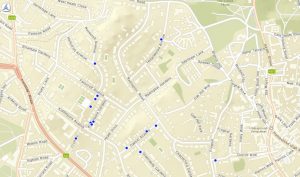The vital role of Camden’s street trees
A healthy urban tree canopy is important for improving air quality by removing pollutants as well as for storing carbon captured from the air.
The amenity value of council-managed trees as calculated by Capital Asset Valuation of Amenity Trees (CAVAT) in is calculated to be £343.2 million (2019). Their value for some individual benefits is set out below.
Value of Benefits from Camden’s Street Trees, 2017
|
Benefit |
Amount |
Value (£ thousands |
|
Pollution removal |
5 tonnes p.a. |
£175.5 p.a. |
|
Carbon storage |
10,800 tonnes |
£691.3 |
|
Carbon sequestration |
107 tonnes p.a. |
£48.5 p.a. |
|
Avoided surface water runoff |
6,739 cu. metres p.a. |
£10.2 p.a. |
Source: iTree Eco inventory study
The Council is committed to increasing Camden’s leaf canopy cover. Camden’s pollarding policy is not consistent with this aim and is jeopardising the health of RedFrog street trees
Camden’s pollarding policy is jeopardising the health of street trees
Camden operates a biennial pollarding policy, which is jeopardising the health of RedFrog street trees and stripping them of their leaf canopies.
A recent report ‘Trees on the Edge’ came to quite damning conclusions, establishing beyond doubt that the current policy is perverse, destructive, expensive and is not working. The report concludes that the policy of bi-annual reduction be stopped immediately, and proposes urgent amendments to the current Tree Policy in order to “reverse this pointless destruction, promote a green and healthy environment and reassure residents whose confidence in the councils’ competence has been severely eroded”.
You can read the executive summary below, or read the full report Trees on the Edge here.
Pollarded trees on right (with trees awaiting pollarding on left), November 2020
Below, a distressed plane tree producing epicormic growth, Summer 2018
Trees on the Edge – A report and proposals
Executive Summary
This report is based on answers to Freedom of Information requests, information from Camden Open Data, an internal presentation made by Camden Tree Officers in 2015, contributions from local groups and committees and the study of recent academic and professional materials.
Camden Trees Department characterises large parts of the borough as having a significant subsidence problem. Their policy of bi-annual pollarding is based on the belief that this will protect the council (a) by having a maintenance programme that is defendable when subsidence claims arise and (b) leading to a reduced risk of them arising in the first place.
The consequences of this policy are degrading the urban environment in these wards and post codes to an unacceptable level. The leaf canopy is disappearing as streets are denuded of full sized trees while virtually all benefits provided by mature trees, be it air quality, shade, habitat and more are fast disappearing. The Council is knowingly destroying mature trees, indeed their website states this is ‘unfortunate but unavoidable’. 1
Through Freedom of Information requests to the councils of Camden, Hackney, Westminster and Islington this new report establishes beyond doubt that the current policy is perverse, destructive, expensive and is not working. The report finds that of the four councils Camden has:
- The largest tree maintenance and planting budget.
- The second fewest street trees.
- The largest number of trees felled per annum
- The most trees planted per annum
- The most statistical data and records
- The laxest replanting & monitoring programme
- The weakest benchmarking for tree maintenance standards, and
- The same low rate of tree related subsidence as its neighbours who do not routinely pollard their mature trees. 2.
The report concludes that the policy of bi-annual reduction also known as stripping and topping be stopped immediately. Furthermore, it proposes urgent amendments to the current Tree Policy in order to reverse this pointless destruction, promote a green and healthy environment and reassure residents whose confidence in the councils’ competence has been severely eroded.
A full report of Trees on the Edge is available here.
The report was written by Harvey Flinder, a resident of Camden for over 30 years, it is supported by and represents the views of local residents groups, local Conservation Area Committees, Air Quality Action Groups, Councillors, and activists in local politics and environmental issues.
A map of the street tree removals in Frognal & Fitzjohn’s, 11.10.18 is shown below:
More information can be found on Camden’s Open Data portal:
https://opendata.camden.gov.uk/Environment/Trees-In-Camden/csqp-kdss/data
Fallen street trees
Trees on council land are managed by Camden’s Arboricultural service, which also operates an emergency call out system for trees that have fallen within Council land, or have fallen onto the highway.
Commemorative Planting
It is possible to request to plant commemorative trees on Council-owned land including. The cost is
- £574.00 for the tree, planting and three years watering and maintenance + VAT
- £608.98 for an administration fee
Email: treesection@camden.gov.uk
Website: www.camden.gov.uk/trees
Tree Planting
Tree planting is important for health, wellbeing, cooling, shading, air quality, reducing the risk of flooding by reducing surface water runoff, and to support wildlife. Trees selected for planting should have a high value to insects, as in the list below, where trees are arranged in order of the number of species supported.
Trees to enhance biodiversity and conservation area character, as found in the London Survey
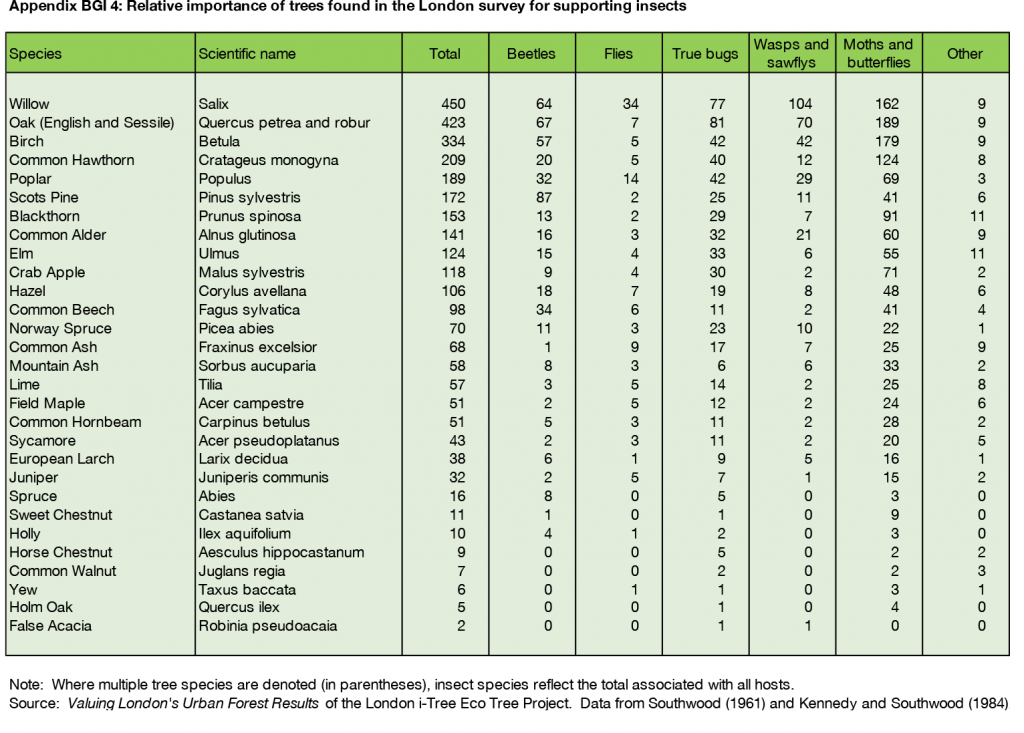
Tree planting in hard surfaces
Tree planting in hard surfaces can be facilitated by incorporating a root barrier to line a tree pit.
Root Barriers for Hard Surface Planting

The perimeter of a tree pit can be lined with a durable impermeable membrane. This will force the roots vertically to depths of about 150 cm before they spread laterally. A root barrier is an effective means of reducing the risk of shrinkage / heave of ground beyond the tree pit.
Advantages are:
- protection of the area surrounding the tree;
- enabling the tree to receive optimum oxygen and water levels;
- ensuring against damage to structures;
- enabling trees to flourish and grow to maturity;
- offering protection to utilities, service ducts and paved areas.
Root barriers are inexpensive, with a cost of c. £30 per square metre.
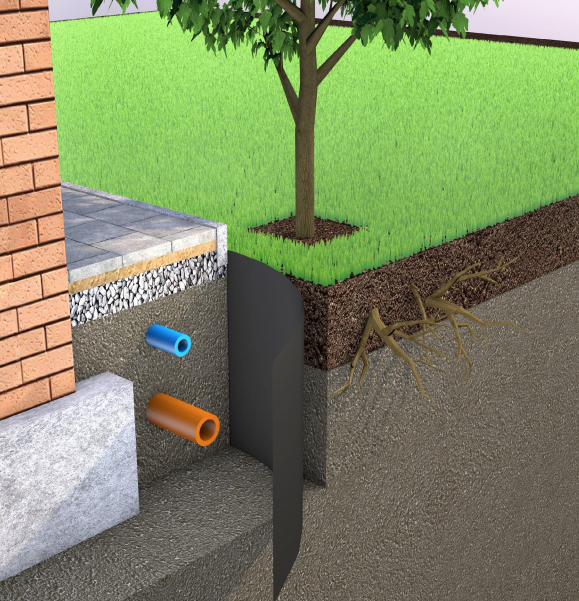
Suppliers include AHS Ltd:

